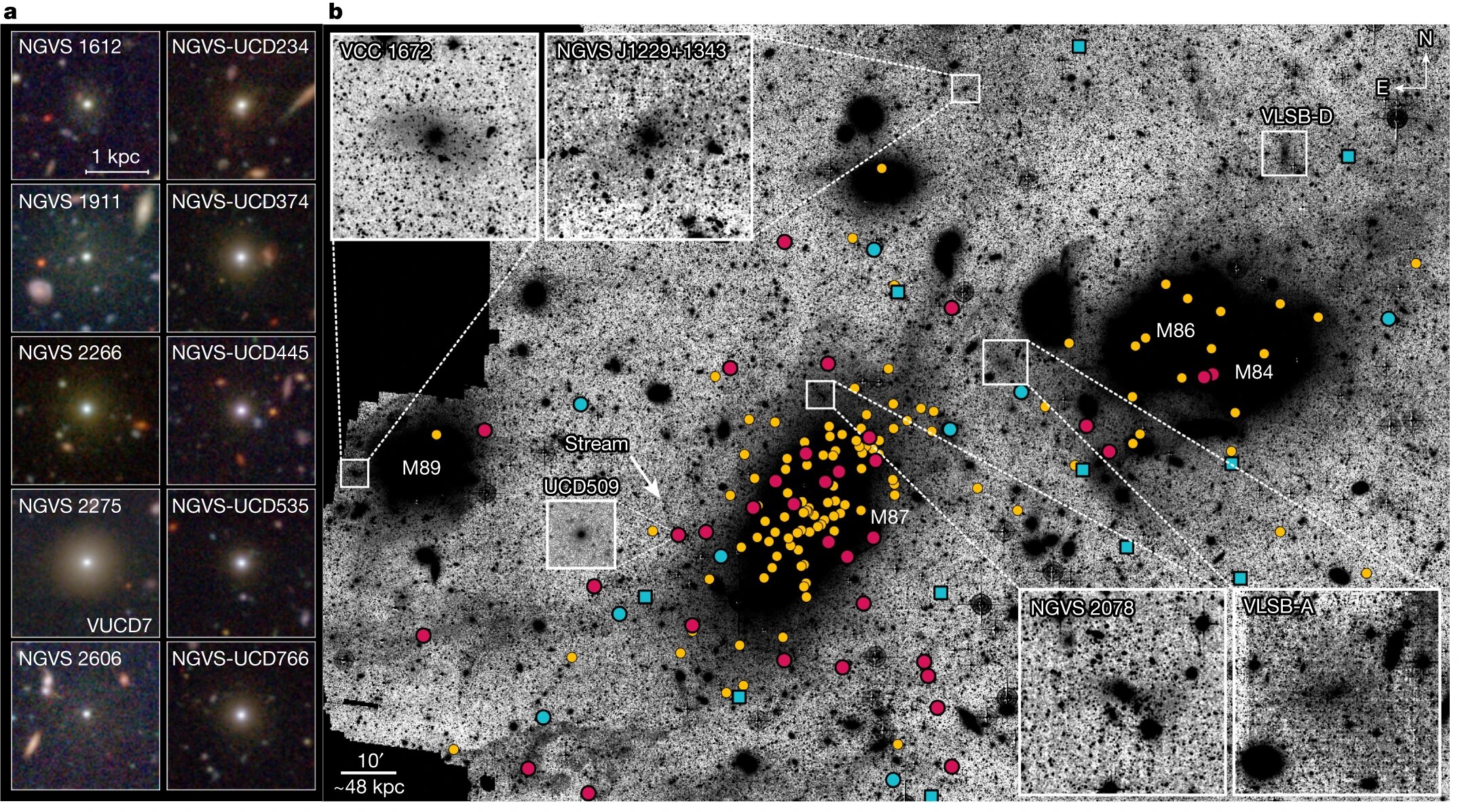Astronomers using the Gemini North telescope, one-half of the International Gemini Observatory operated by NSF’s NOIRLab, have captured the eroding remains of more than 100 dwarf galaxies as they transition into ultra-compact dwarf galaxies, objects with masses much greater than star clusters yet much smaller than dwarf galaxies. These findings confirm that many ultra-compact dwarf galaxies are likely the fossil remains of normal dwarf galaxies that have been stripped of their outer layers.
Ultra-compact dwarf galaxies (UCDs) are among the densest stellar groupings in the universe. Being more compact than other galaxies with similar mass, but larger than star clusters—the objects they most closely resemble—these mystifying objects have defied classification. The missing piece to this puzzle has been a lack of sufficient transitional (intermediate) objects to study. A new galaxy survey, however, fills in these missing pieces to show that many of these enigmatic objects are likely formed from the destruction of dwarf galaxies.
The work is published in the journal Nature.
The idea that UCDs are remnants of disrupted dwarf galaxies has been proposed since they were discovered over two decades ago. However, previous searches have not revealed the large population of galaxies in transition that you would expect to find.
So, an international team of astronomers conducted a systematic search for these intermediate-stage objects around the Virgo Cluster, a grouping of thousands of galaxies in the direction of the constellation Virgo. Using the Gemini North telescope near the summit of Mauna Kea in Hawaiʻi, the team identified more than 100 of these missing-link galaxies that show every stage of the transformation process.
2023-11-08 19:41:06
Original from phys.org



















